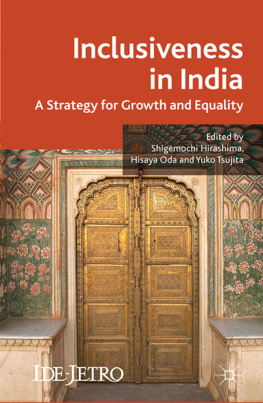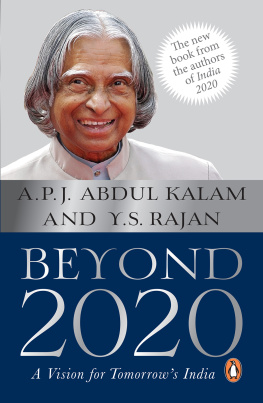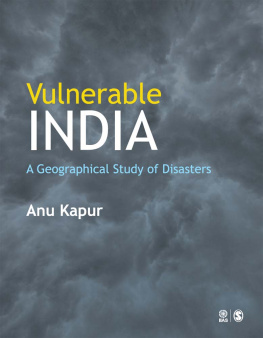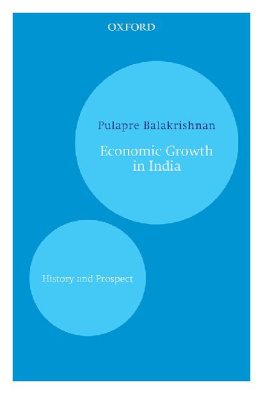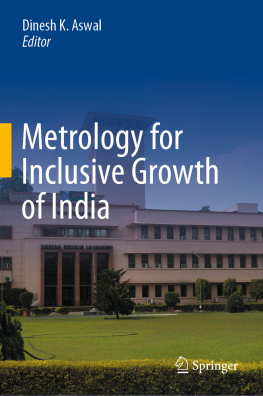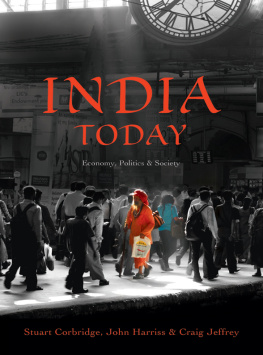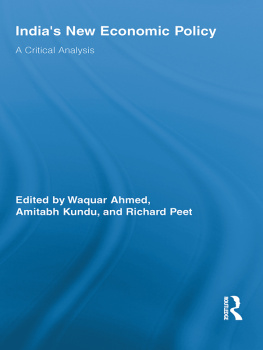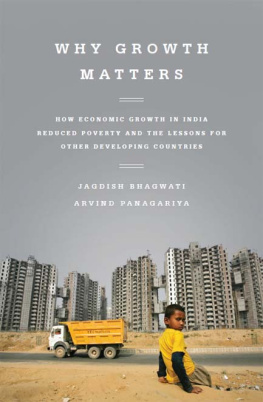Index
Key: bold = extended discussion; f = figure; n = note; t = table.

affirmative action programme
agricultural labour
agriculture
fertile land
crop failures
growth rate (Bihar)
investment and productivity
labour-surplus subsistent
off-farm employment (n7)
slow growth, low productivity
see also land distribution
All-India Debt and Investment Survey (AIDIS, NSSO)
alternative development strategy (Bihar)
agricultural growth
human development
infrastructure (market integration)
poverty alleviation
Andhra Pradesh (AP) t
Anganwadi t
Arunachal Pradesh
Aschauer, D. A.
Assam (AS) t
assets
changes (1980s, 1990s)
composition (rural India, 20023) f
under-reporting bias
asymmetric federalism
and regional disparities
Ayodhya
Bahujan Samaj Party t
Bandyopadhyay Commission (n1112)
bank branches t
licensing policy (1977)
loss-making
number
number (access to financial services)
openings (n3)
population group-wise distribution (19692005) f
Beck, T.
below poverty line
BPL children (n10)
BPL households
BPL population (n1)
(19732005) f
Bihar
Muslims
types of measurement (n5)
Bhandari, A. K.
Bharatiya Janata Party (BJP) (n16, n22)
Bihar
bifurcation (loss of Jharkhand, 2000)
butt of jokes
constraints for provision of infrastructure (n1622)
democracy versus low growth, poverty, inequality
divide et impera (welfare schemes) (n1922)
economic duality index t
economic growth (20049) (n23)
economic stagnation
economy predominantly agrarian
education
electric light and minorities
electric light and minorities (results and analysis) (n1314)
electricity consumption
electrification
fertile region
financial dependence upon central government
fiscal deficits/fiscal deterioration
fiscal transfers versus own revenue (20067) t
further research
growth of economy
health status
historical legacies (n79)
house with electric light vis--vis urban population/size of town (2001) f
human development
inequality
infrastructure
investment constraints (n201)
jungle raj
land prices (19982008)
land reform
landownership by caste t
literacy
migrants to Delhi
natural resources: lost to Jharkhand (2000) (n4)
NSDP (n1)
obstacles to reform
overcoming under-development (case study)
per capita GSDP (19802006) t
Plan expenditure and provision
of infrastructure (n1922)
political economy (n16)
political events (20059) t
political stability
population
population (Muslim) t
poverty ratios
public finances weakening
public goods (electricity)
relative income gap with other states (19992006) t
revenue capacity per capita(20067) t
rice yields (19502006) f
rural areas
sectoral composition f
social sector undeveloped (n17)
socio-economic structure
state government (current)
state left behind (n1618)
state revenue
swing voters
trapped as poorest Indian state t
tribal villages
under-development and captured democracy
BIMARU t
birth (health care) t
(n2931)
BRICs (Brazil, Russia, India and China)
Burgess, R.
caste (n45)
Bihar
land-ownership t
school drop-outs
see also Mahadalit castes
censuses
(1931) n
(1961) (n2)
(1971) (n2)
(1981) n
(1991) n
(2001) n
Central and Centrally Sponsored Schemes (CSS) (n19)
central government
active intervention required
employees
ministries
regulatory intervention
relative powers (versus state governments)
role (economic)
Central Government Health Schemes (CGHS)
Central Plan and Centrally Sponsored Scheme
Chhattisgarh (2000) (n1)
children
Delhi slums (educational disparity)
health
infants
life-cycle
out-of-school: drop-outs (n215)
out-of-school: never attending
out-of-school: probability
over-age pupils (n215)
pre-school age
pupil teacher ratios t
coefficient of variation (CV)
method of calculation (n5)
colonial legacies
regional disparity
communal rioting
consumption (n5)
Lorenz curve
personal data (n4)
convergence theory
beta-convergence () (n6)
sigma-convergence () (n6)
corruption (n3)
credit
rural poor
decentralization
Delhi (n1)
embroidery homeworkers (attempt to organize)
school education (structure) (n4)
slum population
Demirg-Kunt, A.
democracy
demography
development strategies
asymmetric federalism and regional disparities
backward states
interstate disparities widening
national
sector selectivity versus region selectivity
sector-specific, region-neutral
Disparity
income
inter-state and intra/state ;
see also intrastate disparities
economic duality (Bihar and India) t
literature
economic growth
correlation coefficient (industry versus agriculture)
empiricism
failure to promote (Bihar)
impact of financial development
infrastructure and (n713)
infrastructure and interstate disparity
interstate disparity
jobless
literature (interstate disparities)
low
market-led
national strategy
non-agricultural
post-independence era
pro-poor
relationship with financial development
relationship with financial inclusion
sustainable
economic liberalization
education
disparity (Delhi slum children)
elementary
household decision-making
literature
percentage attending school
primary (elementary)
primary (universalization)
private
privatization
public versus private provision
secondary
electricity
state-wise infrastructure provision (n1013)
transmission and distribution (T&D) loss (n11)
electricity consumption
per capita (n10)
validity as proxy for infrastructure endowments (defended)
Employee State Insurance Scheme (ESIS)
employment (n4)
challenges
inclusive sustained
non-agricultural (n8)
public sector
state and central services
urban
Ethical Trading Initiative (ETI, London, 1998)
extremely backward classes (EBCs) (n5)
federalism
asymmetric
Fifteen-Point Programme for Welfare of Minorities (Gandhi, 1983)
finance, institutional versus
non-institutional (n2)
financial inclusion
definition
explicit policy objective (RBI, 2005)
(n13)
literature
measurement
phase 1 (1980s)
phase 2 (1990s to March 2005)
phase 3 (April 2005)
poverty conditions (n45)
relationship with economic growth and infrastructure development
fiscal federalism
fiscal transfers (n18)
vertical versus horizontal distribution
Five-Year Plans
first
first to fourth
see also Plan expenditure
Five-Year Plan (eleventh, 200712)

